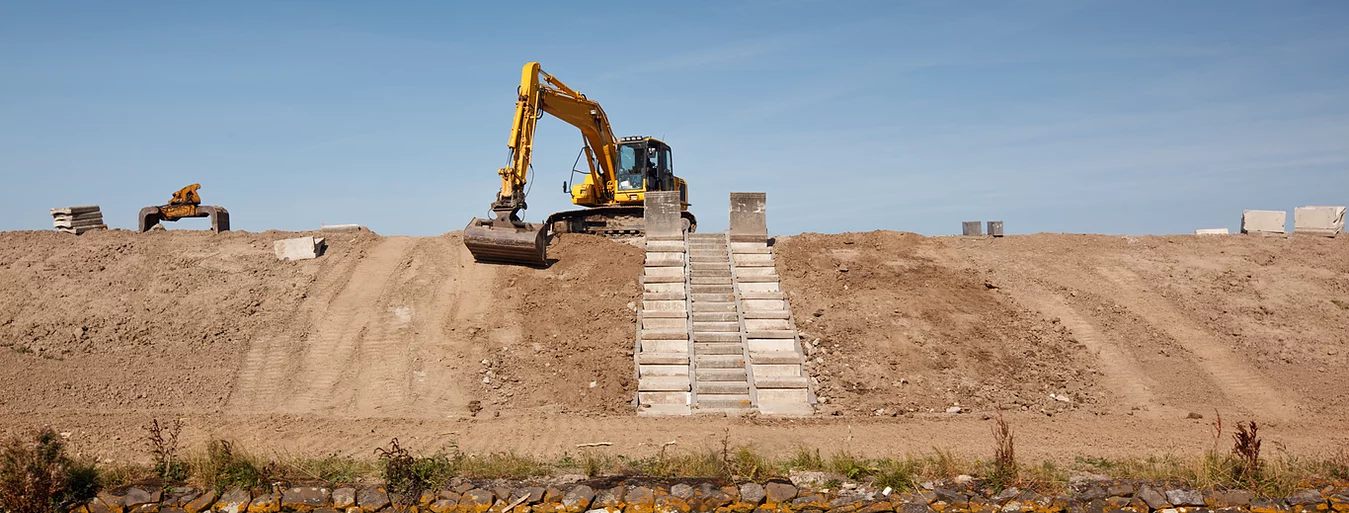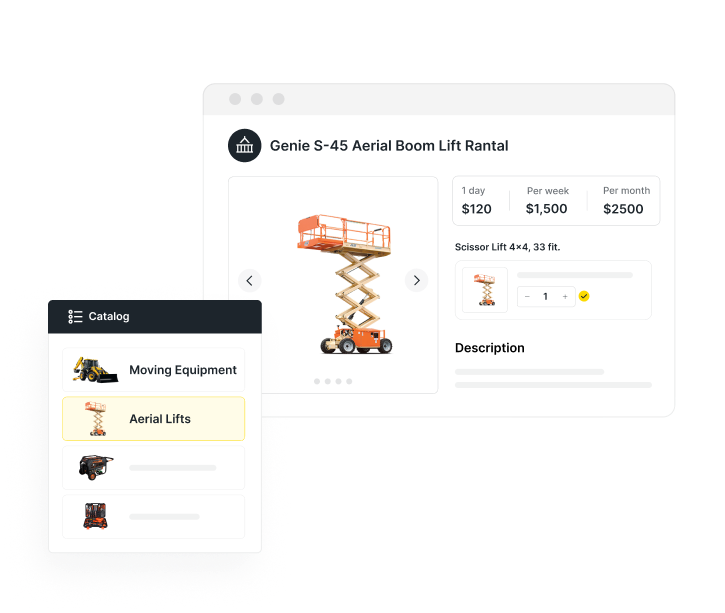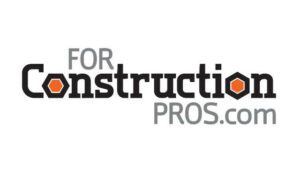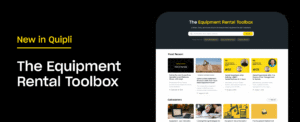The construction equipment market in 2025 has been fundamentally transformed by tariff impacts, supply chain disruptions, and persistent inflation. Equipment prices have reached unprecedented levels, with some categories seeing increases of 25% or more due to new Section 232 tariffs on steel and aluminum derivatives. If you’re planning equipment purchases for your rental business, understanding current market conditions is crucial for making informed decisions.
Table of Contents
- Heavy Equipment Costs
- Construction Equipment Costs
- Factors That Drive Equipment Prices
- How to Better Manage Buying & Selling Equipment
- Frequently Asked Questions
Heavy Equipment Costs
Heavy equipment represents the backbone of major construction projects, characterized by substantial horsepower and high lifting capabilities. The 2025 market continues experiencing upward price pressure while showing signs of stabilization in certain categories.
Excavators
The excavator market demonstrates strong demand across all size categories, with pricing reflecting both inflationary pressures and technological advancement.
New Excavator Pricing (2025):
- Standard Excavators (20-30 metric tons): $200,000 – $600,000
- Large Excavators (30+ metric tons): $600,000 – $1,500,000+
- Compact Excavators (under 20 tons): $80,000 – $200,000
Used Excavator Market:
- General Range: $50,000 – $800,000+ depending on age, hours, and condition
- Mid-Sized Units (20-30 tons): $8,000 – $12,000 monthly rental rates
- Large Units (30-50 tons): $12,000 – $18,000 monthly rental rates
- Extra-Large Units (50+ tons): $18,000 – $25,000 monthly rental rates
The excavator segment has experienced particular strength due to infrastructure spending and renewable energy project expansion, with higher-than-average price increases driven by strong demand in infrastructure and mining projects.
Bulldozers
Bulldozer pricing reflects diverse applications and size requirements across construction and earthmoving operations, with clear segmentation based on horsepower.
2025 Bulldozer Price Ranges:
- Small Bulldozers (Under 100 HP): $75,000 – $150,000
- Mid-Range Dozers (100-200 HP): $150,000 – $300,000
- Crawler Bulldozers (Heavy-Duty): $300,000 – $500,000
- Large Mining/Civil Engineering: $500,000 – $1,000,000+
- Military-Grade Tracked: $800,000 – $1,200,000
The wide range reflects applications from residential projects to major infrastructure work, with specialized military-grade equipment commanding significant premiums.
Wheel Loaders
Wheel loaders continue as critical components for material handling operations, with 2025 pricing reflecting market demand and the ongoing preference for used equipment due to new machinery costs and availability constraints.
Market Segmentation by Investment Level:
- Entry-Level Used (Under $50,000): Typically 8-15 years old with 10,000+ hours of operation
- Mid-Range ($50,000-$150,000): 3-8 years old with 5,000-10,000 hours, representing the sweet spot for buyers looking for reliable used equipment
- High-End ($150,000+): New and nearly new models featuring latest technology and low operating hours
Popular models in the mid-range category include the Cat 950H and Cat 950GC, which offer proven reliability and parts availability. High-quality used equipment is moving fast as contractors prioritize immediate availability over waiting for new machinery deliveries.
Motor Graders
Motor grader pricing reflects the specialized nature of these machines and their critical role in road construction and maintenance operations.
Market Indicators:
- Medium Graders (28,000-35,000 lb): $85.00/hour rental rate (Ohio DOT 2025 standard)
Estimated Purchase Prices:
- Compact Graders (Under 130 HP): $200,000-$300,000
- Standard Graders (130-180 HP): $300,000-$400,000
- Large Graders (200+ HP): $400,000-$500,000
Cranes
The crane market demonstrates the widest price range within heavy equipment, reflecting diverse applications from small mobile units to massive crawler cranes.
2025 Crane Price Spectrum:
- Market Range: $50,000 – $5,000,000+ (based on current market listings)
- Boom Truck Cranes: $100,000 – $500,000
- 2019 Terex BT3470: $285,000
- 2018 National 1400H: $425,000
- 2020 Manitex 22101C: $380,000
- Tower Cranes: $500,000+ (2021 Potain MDT 189 used model)
- Large Crawler Cranes: $2,000,000 – $5,000,000
The extreme price variation reflects the specialized nature of different crane types and their specific applications, from general construction mobility to major infrastructure projects.
Construction Equipment Costs
Construction equipment encompasses smaller, more specialized machinery essential for day-to-day operations, typically characterized by greater mobility and lower capital investment compared to heavy equipment.
Backhoes
Backhoe loaders remain among the most versatile construction equipment pieces, with 2025 pricing reflecting strong demand and multifunctional capabilities.
New Backhoe Pricing (2025):
- Compact Backhoes: $80,000 – $120,000
- Standard Backhoes: $120,000 – $200,000
- Large/Premium Models: $200,000 – $300,000+
Used Backhoe Market:
- Entry Level: $25,000 – $60,000 (older models, higher hours)
- Mid-Range: $60,000 – $120,000 (3-8 years old, moderate hours)
- Premium Used: $120,000 – $180,000 (recent models, low hours)
Key Market Factors:
- Extended cab models command $8,000-$15,000 premium for operator comfort
- 4WD capability adds approximately $10,000-$20,000 to base price
- Advanced hydraulic systems and precision controls increase costs by $15,000-$30,000
Skid Steer Loaders
Skid steer loaders represent one of the most popular categories due to their compact size, maneuverability, and extensive attachment ecosystem.
2025 Skid Steer Pricing:
- Compact Models (1,300-1,600 lb capacity): $35,000 – $55,000
- Standard Models (1,600-2,200 lb capacity): $55,000 – $75,000
- Large Models (2,200+ lb capacity): $75,000 – $100,000+
Used Market Segments:
- Budget Range: $15,000 – $35,000 (older models, higher hours)
- Mid-Market: $35,000 – $55,000 (3-7 years old)
- Premium Used: $55,000 – $75,000 (recent models, low hours)
Attachment Ecosystem:
- Standard bucket: Included with base machine
- Specialty attachments: $2,000 – $15,000 each
- Popular attachments include augers, trenchers, brush cutters, and snow removal equipment
Forklifts
The forklift market demonstrates significant variation based on power source, capacity, and intended application, with electric models gaining market share despite higher initial costs.
New Forklift Pricing by Category:
- Electric Forklifts (3,000-5,000 lb): $25,000 – $45,000
- Gas/Propane Forklifts (3,000-5,000 lb): $20,000 – $40,000
- Diesel Forklifts (5,000+ lb): $40,000 – $80,000+
- Rough Terrain Forklifts: $45,000 – $85,000
Used Forklift Market:
- Light-Duty Used (Under 5,000 lb): $8,000 – $25,000
- Standard Used (5,000-8,000 lb): $25,000 – $45,000
- Heavy-Duty Used (8,000+ lb): $45,000 – $65,000
Telehandlers
Telehandlers combine lifting capability with mobility, occupying a unique position in the construction equipment market with strong demand driven by their versatility.
2025 Telehandler Pricing:
- Compact Models (6,000-8,000 lb, 19-32 ft reach): $80,000 – $120,000
- Standard Models (8,000-12,000 lb, 32-42 ft reach): $120,000 – $180,000
- Heavy-Duty Models (12,000+ lb, 42+ ft reach): $180,000 – $300,000+
Used Market Analysis:
- Entry Level: $35,000 – $80,000 (older models, construction-grade)
- Mid-Range: $80,000 – $140,000 (3-7 years old, good condition)
- Premium Used: $140,000 – $200,000 (recent models, low hours)
Compact Track Loaders
Compact track loaders have gained significant market share due to superior traction and reduced ground pressure compared to wheeled alternatives.
2025 Pricing Structure:
- Small Track Loaders (1,500-2,000 lb capacity): $45,000 – $65,000
- Medium Track Loaders (2,000-2,800 lb capacity): $65,000 – $85,000
- Large Track Loaders (2,800+ lb capacity): $85,000 – $120,000
Used Market Performance:
- Budget Segment: $20,000 – $45,000 (older models, higher hours)
- Standard Used: $45,000 – $70,000 (mid-age, moderate hours)
- Premium Used: $70,000 – $95,000 (recent models, low hours)
Factors That Drive Equipment Prices
Tariff Impacts and Trade Policy
The most significant development affecting construction equipment pricing in 2025 has been the expansion of Section 232 steel and aluminum tariffs. On August 16, 2024, the Department of Commerce implemented a 25% duty rate on “derivative” steel and aluminum products, directly impacting multiple construction equipment categories including bulldozers, graders, excavators, tractors, and mobile cranes.
The Associated Equipment Distributors (AED) estimates this affects more than 200 HTS codes impacting equipment dealers and manufacturers. Industry reports indicate construction equipment manufacturers have struggled to pass through these additional costs due to competitive pressures, resulting in drops in price realization and squeezed margins.
Construction Cost Inflation
Beyond tariff impacts, the market faces persistent inflationary pressures. June 2025 construction input price data reveals overall construction input prices increased 0.1% monthly, with annual increases of 4.7% overall. Key material price increases include aluminum mill shapes (+8.3%), steel mill products (+6.2%), and fabricated metal products (+5.8%).
Supply Chain Disruptions
Supply chain challenges significantly impact equipment availability and pricing. Wait times for new machinery remain extended, with lead times for some models stretching six months to a year. Parts availability continues improving but delays persist for critical components including computer chips and hydraulic parts.
This has created a structural shift toward the used equipment market, with many buyers opting for reliable pre-owned equipment to save money and avoid delays. Due to high demand, quality used equipment is moving fast, supporting pricing levels and reducing traditional depreciation patterns.
Infrastructure Spending and Technology Integration
Government infrastructure investment continues driving equipment demand, particularly for road, bridge, utility, and renewable energy projects. Warehouse and industrial construction is pushing up demand for forklifts, telehandlers, and compact equipment.
Technology integration represents both a cost driver and value proposition. 3D guidance systems add $15,000-$45,000 to base costs, while telematics and advanced hydraulics increase prices by $5,000-$25,000. However, modern systems can reduce overall costs by 23% through improved efficiency and automation.
How to Better Manage Buying & Selling Equipment
Strategic Equipment Management with Modern Software
The current high-cost environment makes effective equipment management more critical than ever. With equipment failures causing 25% of the $50 billion lost yearly from downtime, proper fleet management directly impacts profitability.
Key Management Strategies:
- Preventive Maintenance Excellence: Poor maintenance care lowers productivity by 15%, leading to overtime, part replacements, and emergency repairs
- Multi-Purpose Equipment Priority: Equipment like backhoe loaders save time and money because these tools can do many jobs, requiring fewer total machines
- Performance Monitoring: Companies that systematically track progress often reach operational goals faster through data-driven decision making
Streamline Operations with Quipli
Modern rental software has become essential for managing expensive equipment fleets effectively. Quipli’s unified platform helps rental companies optimize their operations through:
Inventory Management: Real-time tracking prevents double-bookings and provides live visibility into asset utilization, critical when managing equipment worth hundreds of thousands of dollars.
Maintenance Tracking: Automated maintenance scheduling and history tracking help prevent the costly breakdowns that plague equipment-intensive operations.
Financial Optimization: With excavator rentals commanding $8,000-$18,000 monthly rates, proper pricing and utilization tracking directly impacts revenue.
Boom & Bucket Integration
For construction equipment rental companies, Quipli’s integration with Boom & Bucket marketplace expands rental opportunities by connecting inventory with a broader customer base, helping maximize utilization of expensive equipment assets.
Frequently Asked Questions
Should I lease instead of buying for my rental business?
With new equipment prices reaching unprecedented levels and lead times extending 6-12 months, leasing has become increasingly attractive. Leasing preserves cash flow while providing access to newer technology, and flexible lease terms can align payments with seasonal revenue patterns typical in construction.
What are insurance considerations?
Insurance costs have increased alongside equipment values. Consider comprehensive coverage that includes theft, damage, and business interruption. Many insurers now require telematics systems for equipment over $100,000, which can actually reduce premiums through improved security and monitoring.
Should I buy new or used equipment for my rental business?
The current market strongly favors used equipment purchases. With 6-12 month lead times for new machinery and immediate availability needs from contractors, quality used equipment provides better return on investment. The report indicates high-quality used equipment is moving fast, and traditional depreciation patterns are disrupted by strong demand.
What is the most expensive construction equipment?
Large crawler cranes represent the peak of construction equipment investment, with costs ranging from $2,000,000 to $5,000,000. These machines are typically reserved for major infrastructure projects and require specialized operators and maintenance programs.
Navigate the New Equipment Reality with Quipli
The construction equipment market has fundamentally changed in 2025. Rising costs, extended lead times, and supply chain constraints have made equipment rental not just attractive, but essential for many contractors. This shift creates tremendous opportunities for rental companies equipped with modern management systems.
Quipli helps equipment rental companies thrive in this challenging environment by providing the operational efficiency and customer experience tools needed to compete with national chains. Our rental ecommerce platform embeds directly into existing websites, making rentals as easy as an Amazon purchase and allowing customers to complete entire transactions online.
Ready to streamline your rental business operations and capitalize on the growing equipment rental market? Contact us today to book your demo and discover how Quipli can help you optimize your fleet management and grow your business in 2025.










